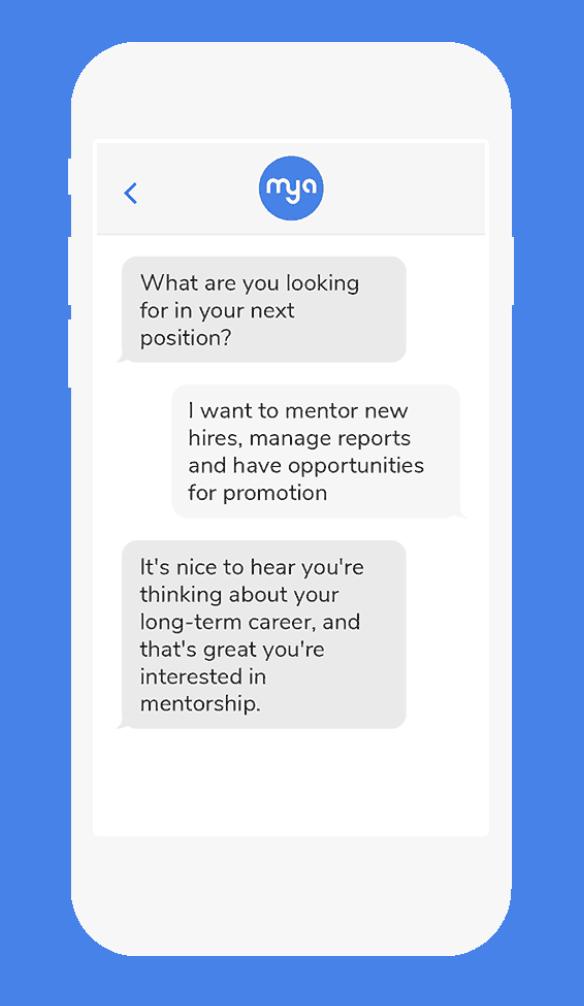How to Use Knowledge Management & Conversational Recruiting to Attract Candidates
By Josh Brown

The average job offer brings in 250 resumes, many of them unqualified.
Not only do recruiters have to process large amounts of information during the recruitment process, but they are also expected to communicate quickly and consistently with candidates. The expectations are especially high from millennials, who now are the workforce’s largest group. Millennials expect fast response times and consistent communication via their preferred channels.
Traditional recruitment methods no longer suffice for staying competitive and attracting top talent. As a response, recruiters rely on multi-platform recruitment strategies involving conversational recruiting.
What is Conversational Recruiting?
Conversational recruiting attracts, engages, and qualifies candidates through conversation. On social media, recruiters can respond to candidates through comments or direct messages. Video and audio calls can help answer more individualized questions.
But the new conversational recruiting tools don’t necessarily require human interaction from the employer. Instead, even the simpler bots can handle regular queries with pre-determined answers. Advanced bots with conversational artificial intelligence analyze the candidate’s language and source answers.
For candidates, chatbots result in immediate responses around the clock. But even if the bot replies straight away, the experience is ruined if the bot cannot provide a response that is personalized and helpful to a candidate. That is why the success of chatbots relies on a strong foundation of knowledge management.
Knowledge Management—The Foundation for Conversational Recruiting
Setting up a conversational chatbot is an investment, especially when involving advanced artificial intelligence. But the quality of the chatbot depends on the information it accesses. A knowledge management system is necessary for providing the chatbot with useful content.
A typical solution for knowledge management is a knowledge base, wiki, or some other type of centralized content collaboration software to help capture, organize, and share content within the organization. By having a central repository of knowledge, you can keep the content under single-source control while still keeping it dynamic to ensure that all data is easy to review and update.
The information from your content collaboration software can then be mapped to your chatbot to help with answering potential candidate questions.
As part of the company’s knowledge management strategy, data collected from a conversation between an AI chatbot and candidates can go into a talent relationship management (TRM) system that tracks candidates. Having all the information gathered in one place helps recruiters when they consider a candidate.

(Example from conversational AI platform Mya. Mya is able to gather data on the candidate's career goals and feed it back to the recruiter)
Knowledge management is especially important when engaging in conversational recruitment over several platforms, as having information gathered in a centralized location makes it easier for employees and recruiters to stay up-to-date in the hiring process.
Attracting and Engaging Candidates With Chatbots
Chatbots can be used to lead candidates into the application process from both online and offline sources, such as ads, job posts, or job fairs.
For example, a candidate can use their mobile phone to scan a QR-code from a job fair and then land on a unique landing page where they can interact with a chatbot to learn more about the company or available job openings. This way, the chatbot is able to engage candidates and get them into the recruitment funnel before they even have applied.
FAQ answers are typically sourced from a knowledge base or some other internal repository of knowledge. Shorter answers can be given directly in the chat. For more thorough responses, the chatbot can link job seekers to an appropriate source, such as a video or job seeker portal.
52% of job seekers claim that lack of information is the main frustration during their job search. With chatbots, it becomes easy to communicate with candidates regularly. 81% of job seekers claim continuous status updates would improve the candidate experience.
Not only do chatbots engage those who already have applied, but it can also re-activate a candidate database of prior applicants and keep it engaged. For example, chatbots can ask about the candidate’s career situation and recommend new jobs.
Chatbots Help Qualifying Candidates Efficiently
Recruiters spend a quarter of their time screening candidates via phone calls and email. Top talent only is on the market for ten days, but it takes, on average, 24 days to fill a position. By letting chatbots screen candidates, recruiters can cut the time spent on screening and speed up the recruitment process, ensuring that employers don’t miss out on the best candidates.
Chatbots can screen candidates by asking about their skills, qualifications, and experience. The basic bot can ask questions with pre-defined answers for simple screening. The advanced version uses artificial intelligence to analyze the candidates’ own words and applies the information from the conversation to suggest appropriate jobs or source answers from a database. 58% of job seekers consider themselves extremely or fairly comfortable interacting with artificial intelligence apps for initial questions in the application process.
So, let’s say that a candidate shows promise during the screening. The chatbots and applicant tracking systems can help scheduling interviews. Once the meeting is in the schedule, the bot can assist the candidate with interview preparation. A candidate might prepare for an interview by considering possible questions, but the chatbot can ask a broader range of questions that the candidate might not have considered, helping them to think on their feet and rehearse their answers. What if the applicant isn’t a fit for a position? Then the chatbot can use information from the conversation to suggest a job that could be a better match.
Conversational Recruiting That Matters
Chatbots have quickly gained popularity within conversational recruiting. The best chatbots are able to respond to candidates’ demands of immediate communication as well as contribute to efficient candidate experience. For the recruiter, bots save time by cutting down on time-consuming, repetitive tasks.
But to get the highest ROI from an investment in tools such as chatbots, companies need to be strategic about knowledge management. Without a strategy, chatbots may receive the wrong or not enough data. Recruiters risk losing valuable information about candidates. A system becomes crucial when engaging with candidates on several platforms. The need for organizing and sharing knowledge makes knowledge management—particularly knowledge bases—invaluable when setting up a chatbot for conversational recruiting.
The implementation of a chatbot should not be to replace the human element of recruitment entirely. Instead, it lets recruiters spend their time where it matters—interacting with promising, pre-screened candidates.
About the company...
At Social Hire, we don't just do social.
Our digital marketing managers are the wizards that can give you the insight you need to grow your business. Have you had enough of making difficult personnel choices that don't work well for your online marketing?
We're a company that helps our customers further their social media presence by providing social media marketing on a monthly basis.
You might like these blog posts How to Leverage Visuals When Selling on Instagram + Tools to Use, Growing Trend for Consumers To Feel Concerned About Their Data And Privacy, Is Your Internship Program Failing to Teach?, and 7 Rules For Small Business Who Want To Find A Foothold In The Global Arena.
